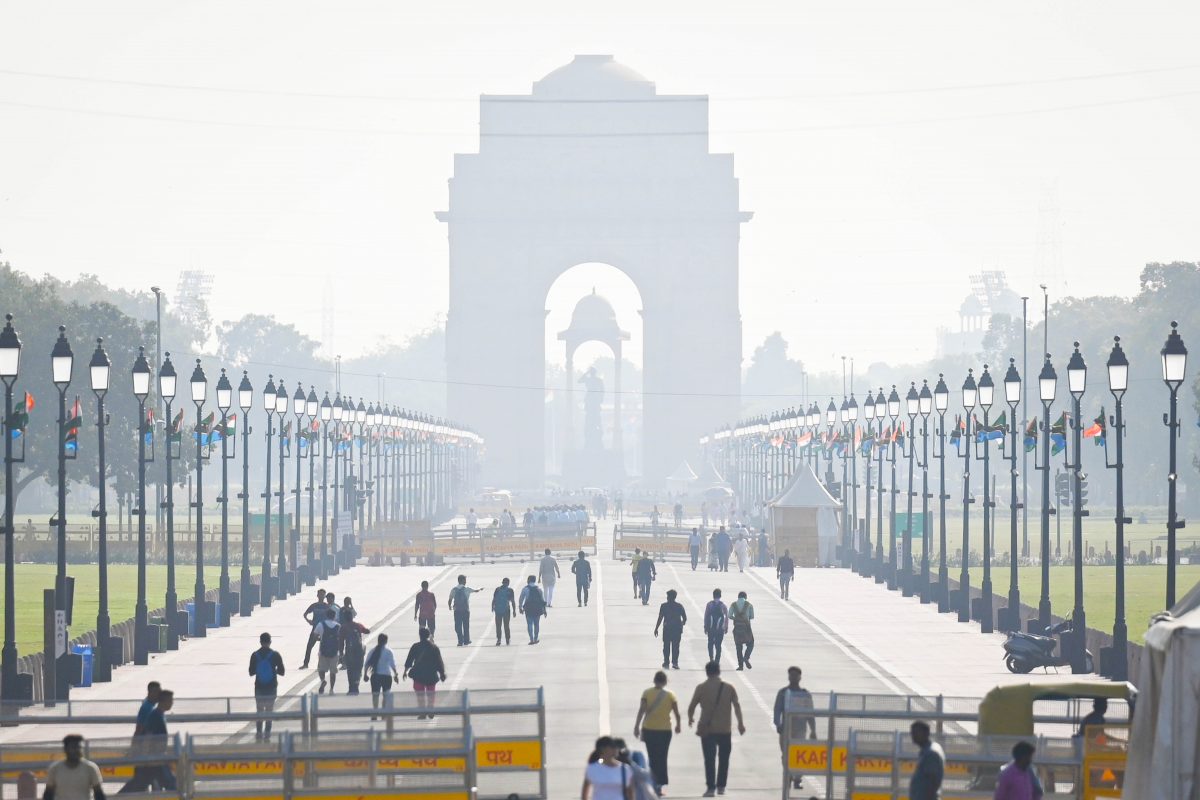Delhi’s air quality remained in the ‘poor’ category for the fifth consecutive day on Friday, and monitoring agencies predict a further decline in the coming days due to unfavourable meteorological conditions. At 9 am, the city’s average air quality index (AQI) stood at 256, with several areas recording ‘very poor’ AQI levels.
This follows a 24-hour average AQI of 256 on Thursday, 243 on Wednesday, and 220 on Tuesday. According to the Centre’s Air Quality Early Warning System for Delhi, the city’s air quality is likely to deteriorate to the ‘very poor’ category on Saturday.
The Delhi government launched a campaign to curb vehicular pollution on Thursday, a year after Lieutenant Governor V K Saxena put it on hold, questioning its effectiveness. A 2019 study by the Central Road Research Institute revealed that keeping engines running at traffic signals can increase pollution levels by more than 9 percent.
Emission inventory and source apportionment studies conducted for Delhi in recent years indicated that on-road vehicular exhaust emissions contribute significantly, ranging from 9 percent to 38 percent of PM2.5 emissions in the capital.
Delhi’s air quality turned ‘very poor’ on Sunday for the first time since May, primarily due to a drop in temperature and wind speed, allowing pollutants to accumulate. Unfavourable meteorological conditions, emissions from firecrackers, paddy straw burning, and local sources of pollution exacerbate air quality issues in Delhi-NCR, particularly around Diwali.
According to an analysis by the Delhi Pollution Control Committee, the capital experiences peak pollution from November 1 to November 15, coinciding with the peak of stubble burning incidents in Punjab and Haryana.
Delhi Environment Minister Gopal Rai announced that the government has identified eight new pollution hotspots in addition to the existing 13 in the national capital. Special teams will be deployed to these areas to monitor pollution sources.
The government also plans to use suppressant powder, including chemical agents like calcium chloride and magnesium chloride, to prevent dust pollution.
Furthermore, the Commission for Air Quality Management directed authorities in the National Capital Region to increase parking fees to discourage private transport and enhance the services of CNG or electric buses and metro trains.
This action is part of Stage II of the Graded Response Action Plan (GRAP), implemented when Delhi’s AQI is predicted to turn ‘very poor’. GRAP categorizes actions into four stages: Stage I ‘poor’ (AQI 201-300), Stage II ‘very poor’ (AQI 301-400), Stage III ‘severe’ (AQI 401-450), and Stage IV ‘severe plus’ (AQI >450).
Last month, the Delhi government launched a 15-point action plan to mitigate air pollution in the capital during the winter season. The plan places a strong emphasis on addressing dust pollution, vehicular emissions, and open burning of garbage. (With inputs from PTI)





